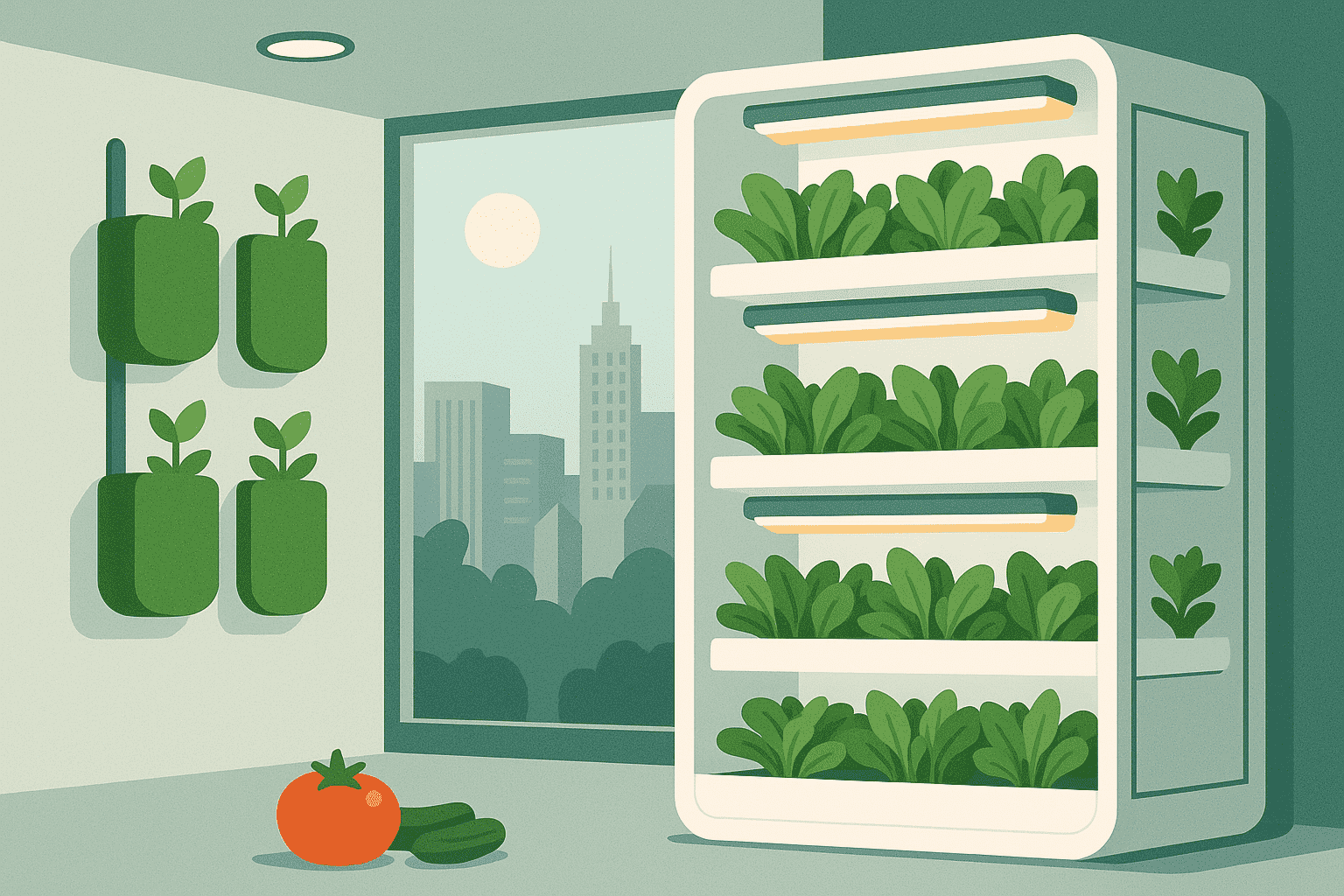Vertical farming is an innovative agricultural method that addresses the growing demand for fresh produce in urban areas by utilizing vertical space and advanced technologies. Unlike traditional farming, it enables the cultivation of vegetables in stacked layers within controlled environments, often using hydroponics, aeroponics, or aquaponics. This method offers significant benefits such as efficient land use, reduced water consumption, year-round production, and proximity to consumers, resulting in fresher produce and lower transportation costs. Despite challenges like high initial investment and energy demands, vertical farming holds great promise for sustainable urban agriculture and future food security. With continued technological advancements, it has the potential to transform how cities grow and access healthy food.
Introduction
With rapid urbanization and decreasing agricultural land, traditional farming methods are facing significant challenges. Cities are expanding, and the demand for fresh, locally-grown vegetables is rising. To meet this demand, a new and innovative farming technique has emerged: Vertical Farming. This modern method of growing vegetables in stacked layers or vertically inclined surfaces is transforming how food is produced in cities.
What is Vertical Farming?
Vertical farming is the practice of growing crops in vertically stacked layers, often integrated into buildings like warehouses, skyscrapers, or shipping containers. Unlike traditional horizontal farming, this method utilizes vertical space, making it ideal for urban environments with limited land.
It often uses soil-less techniques such as:
- Hydroponics (growing in nutrient-rich water),
- Aeroponics (growing in air/mist environment), and Aquaponics (combining fish farming with plant cultivation).
How Does It Work?
Vertical farms use a controlled environment where factors like light, temperature, humidity, and nutrients are optimized using technology. Here’s how it typically works:
1. LED Lighting: Artificial lights replace sunlight and are tuned to the specific needs of each plant.
2. Climate Control: Temperature and humidity are regulated using sensors and automated systems.
3. Water Recycling: Water is recirculated, reducing overall usage by up to 90% compared to traditional farming. 4. Nutrient Delivery: Plants receive precise nutrients directly through water (in hydroponics/aeroponics).
Benefits of Vertical Farming in Urban Areas
1. Space-Efficient
Utilizes vertical space, making it possible to grow more food in smaller areas.
2. Fresh, Local Produce
Crops are grown near or within the city, reducing the need for long-distance transportation.
3. Less Water Usage
Uses significantly less water due to recycling systems, a huge advantage in water-scarce areas.
4. No Pesticides or Herbicides
Controlled environments eliminate the need for chemical treatments, leading to healthier produce.
5. Year-Round Production
Crops can be grown 365 days a year, unaffected by weather or seasons.
6. Job Creation
Creates new types of jobs in agri-tech, system maintenance, and urban farm management.
Types of Vertical Farming Setups
1. Skyscraper Farms: Multi-floor buildings designed specifically for growing food.
2. Container Farms: Old shipping containers retrofitted with growing systems.
3. Wall Farms: Vertical gardens built on walls, often used for herbs or leafy greens.
4. Modular Rack Systems: Adjustable shelves used indoors in compact spaces.
Vegetables Grown in Vertical Farms
While not all crops are suitable, many common vegetables grow very well in vertical systems:
- Lettuce
- Spinach
- Kale
- Basil
- Mint
- Tomatoes (dwarf varieties)
- Strawberries
- Microgreens
Challenges of Vertical Farming
1. High Initial Investment: Setup costs for equipment, lighting, and climate systems can be expensive.
2. Energy Consumption: Artificial lighting and temperature control require a lot of electricity.
3. Technical Knowledge: Requires trained personnel for maintenance and system management.
4. Limited Crop Variety: Root vegetables and large fruiting plants are harder to grow vertically.
Case Studies / Real-World Examples
- AeroFarms (USA): One of the world’s largest vertical farms, producing leafy greens with 95% less water.
- Spread (Japan): A fully automated vertical farm producing over 30,000 heads of lettuce daily.
- UrbanKisaan (India): Bringing vertical farming to urban homes and cities using hydroponics.
The Future of Vertical Farming
As cities continue to grow, vertical farming could play a critical role in:
- Enhancing food security
- Reducing carbon emissions from food transportation Promoting local, sustainable food systems
With advancements in AI, IoT, and renewable energy, vertical farming is expected to become more affordable and widespread in the coming decade.
Conclusion
Vertical farming is more than just a trend—it’s a forward thinking solution to urban food challenges. By combining
technology, sustainability, and innovative design, it enables cities to grow fresh vegetables locally, reduce environmental impact, and make better use of space. As awareness grows and costs decrease, vertical farming might soon become a common sight in urban landscapes across the world.
– Dr. V. M. Chaudhari
Assistant Professor, Department of Horticulture, College of Agriculture
Madhav University, Pindwara (Sirohi), Rajasthan

